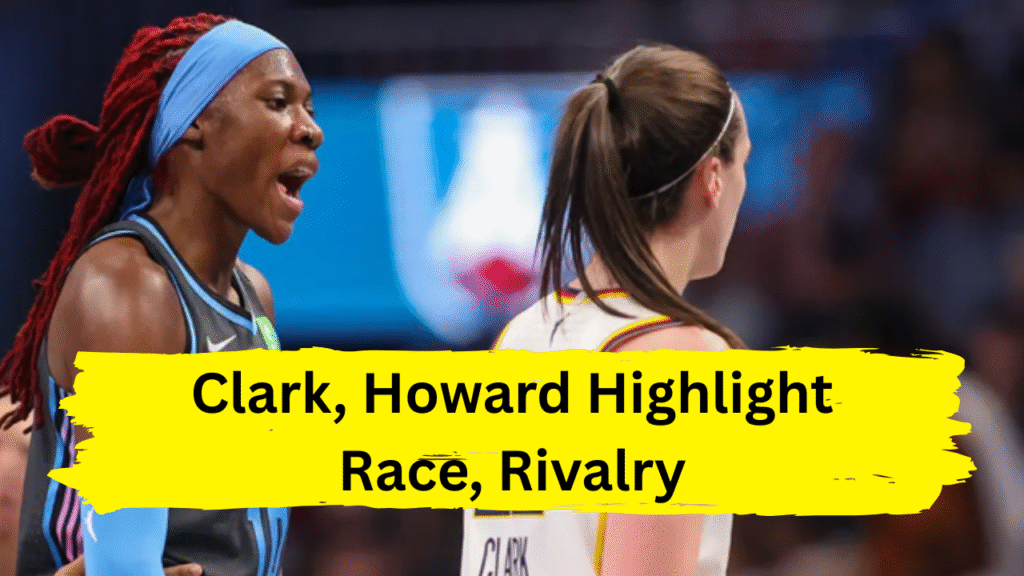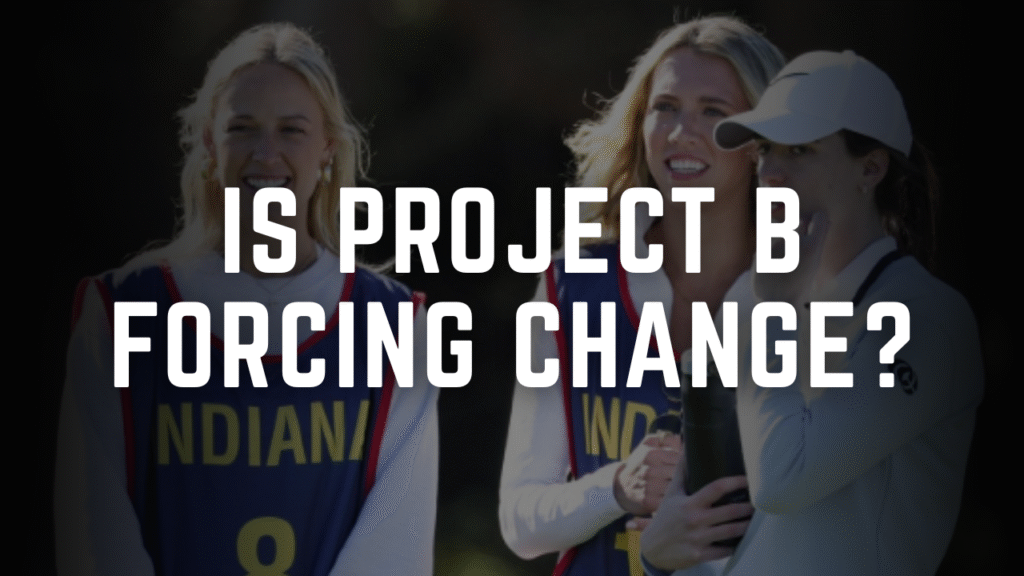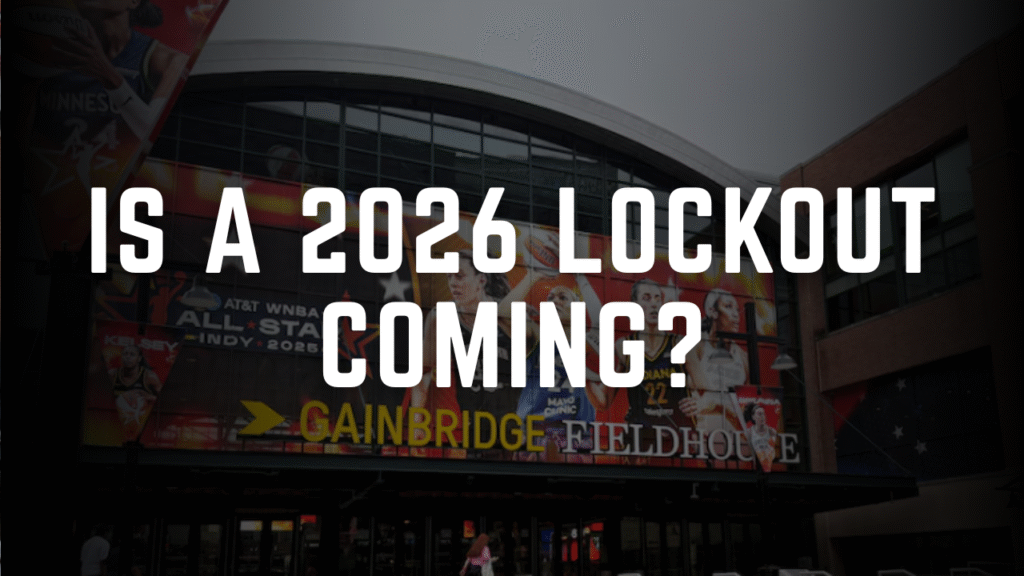The WNBA’s 2025 season has been electrified by rivalries, record-breaking performances, and a growing conversation about race, privilege, and the treatment of athletes. At the center of this storm stands Caitlin Clark, the Indiana Fever’s superstar rookie, whose on-court clashes and off-court candor have sparked debates far beyond basketball. Her recent skirmish with Atlanta Dream guard Rhyne Howard—a moment that saw Clark declare, “I’m not scared of you”—has become emblematic of the league’s broader struggles with physicality, racial bias, and the weight of public expectation .
The Incident: A Microcosm of Intensity
During Thursday’s Fever-Dream rematch, tensions boiled over late in the first quarter. As Clark dribbled past half-court, Howard applied aggressive defensive pressure, leading to a common foul and a brief but fiery exchange. Lip-readers and social media sleuths quickly dissected the interaction, with Clark appearing to tell Howard, “I’m not scared of you,” while Howard seemingly retorted, “Try it” . The moment, though fleeting, highlighted the physical and psychological battles defining the Fever-Dream series.
This clash followed a narrow 91-90 Dream victory earlier in the week, where Clark’s 27-point, 11-assist effort fell short. Atlanta’s strategy—to limit Clark’s touches and test her resilience—mirrors a league-wide trend of opponents using physicality to disrupt her rhythm. Fever coach Stephanie White acknowledged the tactic, stating, “They’re going to push us, shove us, hold us… we have to figure out how to use that against them” .
The Racial Undercurrents: A League at a Crossroads
While the Clark-Howard rivalry is rooted in competition, it has also become a lightning rod for discussions about race in the WNBA. Clark, a white athlete in a league where over 60% of players are Black, has been thrust into a cultural debate about privilege and representation. Her recent Time magazine interview, where she acknowledged the systemic advantages afforded to her as a white player, drew both praise and backlash. “As a white person, there is privilege,” Clark said, crediting Black pioneers like Lisa Leslie and Maya Moore for building the league’s foundation .
This candor ignited fury among some conservative commentators, who accused Clark of “apologizing for being white” . Meanwhile, Black players like Angel Reese and DiJonai Carrington have faced relentless racial harassment, including death threats and online vitriol, often overlooked by the league until recently . The disparity in how Clark and her Black counterparts are treated—both by fans and media—underscores what retired WNBA legend Sue Bird called a long-standing issue: “Racism has been impacting the WNBA well before this year. Caitlin is being used as a pawn” .
Clark’s Dilemma: Navigating Fame and Responsibility
Clark’s rise has been meteoric. Named Time’s 2024 Athlete of the Year, she’s been hailed as the face of women’s basketball, drawing record crowds and lucrative endorsements. Yet her prominence has also made her a magnet for toxic fandoms. Right-wing groups have co-opted her success as a “Great White Hope” narrative, while progressive critics argue her platform obligates her to confront racial inequities head-on .
Clark has tried to walk a tightrope. She supports the WNBA’s investigation into alleged racist remarks directed at Angel Reese during their season opener, stating, “Hate has no place in our game” . However, her reluctance to engage deeply with social issues—preferring to “block out the noise”—has drawn criticism. Connecticut Sun guard DiJonai Carrington challenged Clark to leverage her influence more forcefully, writing, “Silence is a luxury” .
The Broader Implications: Physicality vs. Protection
The WNBA’s physical style of play has further complicated these dynamics. Clark, despite her star power, has endured hard fouls and confrontations, including a flagrant foul on Reese that sparked boos and an ongoing league probe into fan behavior . While some view this as a rite of passage for rookies, others see a racial double standard: Black players like Reese are often labeled “aggressive” or “villainous” for similar intensity, while Clark’s tenacity is framed as “feisty” or “competitive” .
The league’s “No Space for Hate” initiative, launched this season, aims to address these issues through enhanced security, mental health resources, and stricter monitoring of online abuse . Yet many fans and players argue the response has been too slow, particularly after Reese and Carrington spent months calling attention to harassment with little action .
The Path Forward: Equity and Accountability
The WNBA’s growing popularity is undeniable, but its future hinges on addressing systemic inequities. Clark’s journey—from collegiate phenom to professional lightning rod—reflects the league’s potential and pitfalls. Her rivalry with Howard, Reese, and others could elevate the sport, but only if the WNBA ensures all players are celebrated equitably.
As Clark herself noted, “The more we can elevate Black women, that’s going to be a beautiful thing” . Achieving this requires more than lip service. It demands proactive measures: holding abusive fans accountable, amplifying Black voices in marketing campaigns, and confronting the racial biases embedded in sports culture.
Conclusion: A League in Transition
Caitlin Clark’s “I’m not scared of you” moment encapsulates the WNBA’s current state—a league grappling with its identity amid soaring popularity and simmering tensions. Her clashes with Rhyne Howard are more than basketball drama; they’re a microcosm of broader societal struggles. For the WNBA to truly thrive, it must ensure that its rising tide lifts all boats, fostering an environment where talent—not race—defines legacy.
As Clark and the Fever prepare for their next game, the spotlight remains on how the league will navigate these challenges. The answer will shape not just this season, but the future of women’s sports.


